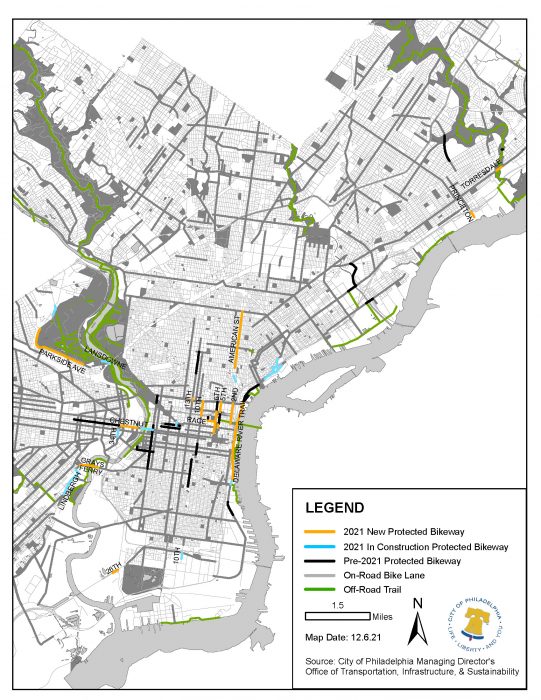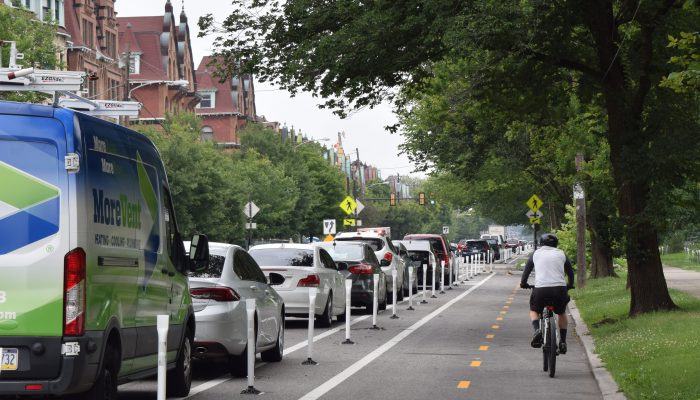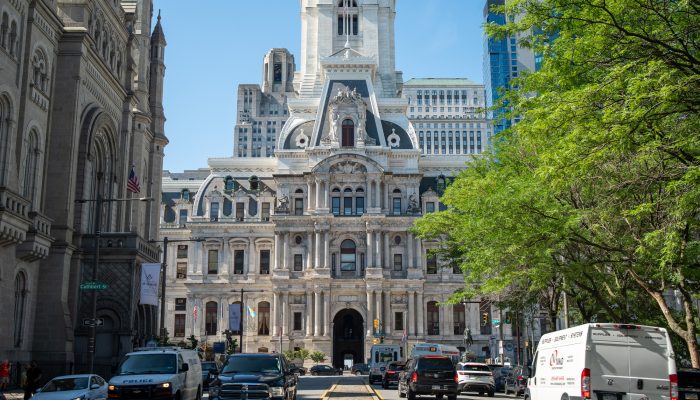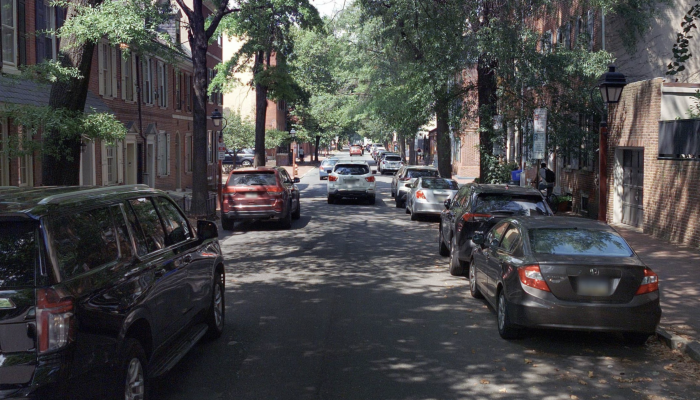By Jeannette Brugger, Bicycle & Pedestrian Coordinator, Office of Complete Streets
The protected bike lanes in Philadelphia doubled in 2021 to more than 16 miles with another three currently under construction. Accounting for two-way bikeways, that equals more than 13 bike lane miles for a total of nearly 25 protected bike lane miles in Philadelphia. The City’s Office of Complete Streets (OCS) worked with partners to envision the bike lane network, share their safety benefits for all road users, and go through years of community engagement, planning, designing, and raising funding for projects.
This progress is possible only with Vision Zero supporters through partnerships with community groups, City Councilmembers, the Pennsylvania Department of Transportation (PennDOT), and non-profit partners. Many projects completed this year were determined based on the City’s High Injury Network (HIN), where 80 percent of crashes occur on only 12 percent of Philadelphia streets. Our approach to road and bike design is through a safe systems and complete streets lens.
This year’s growth focused on north-sound connections in Center City, along the Delaware River, and in the Parkside, Kingsessing, and Kensington neighborhoods. Thanks to funding by the State and the Federal government, we were able to complete projects on 10th, 6th, 5th, and 2nd Street to and from the Callowhill neighborhood as well as a two-way bike lane along West Fairmount Park on Parkside Avenue.

Another major project was the American Street redesign, a reimagined industrial corridor that now features a center bike lane, stormwater features, and narrower lanes for traffic calming.
Two small but mighty projects in the Northeast now connect neighborhoods to the Pennypack Trail and the Delaware River Trail on a two-way protected bike lane with a new crossing on Torresdale Avenue and a new side path on Princeton Avenue.
These projects were made possible by funding from the City and PennDOT repaving funds, the Transportation Set-Aside Program grants, the Department of Community and Economic Development Multimodal Transportation Fund, state Automated Red Light Enforcement funds, and other sources.




